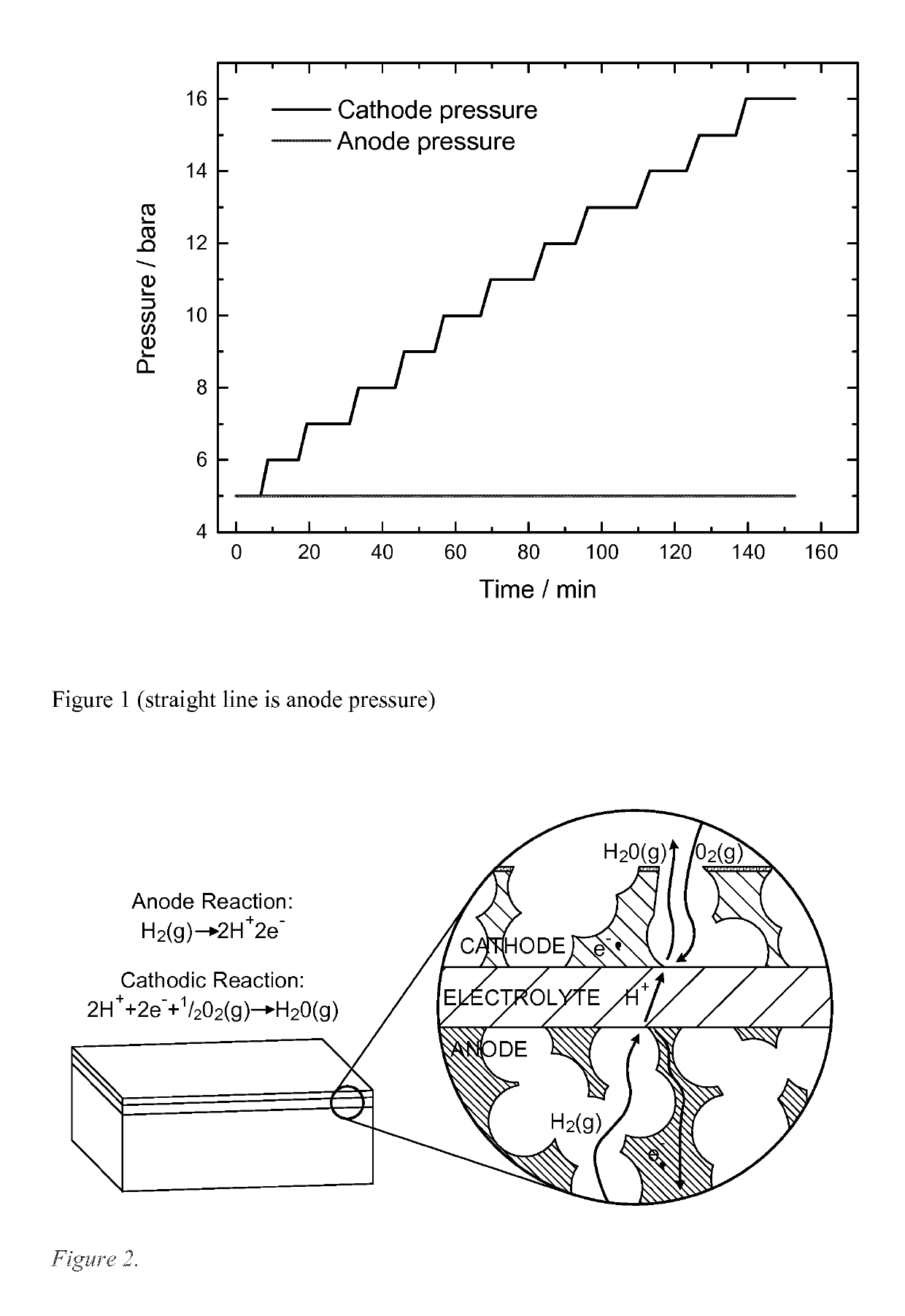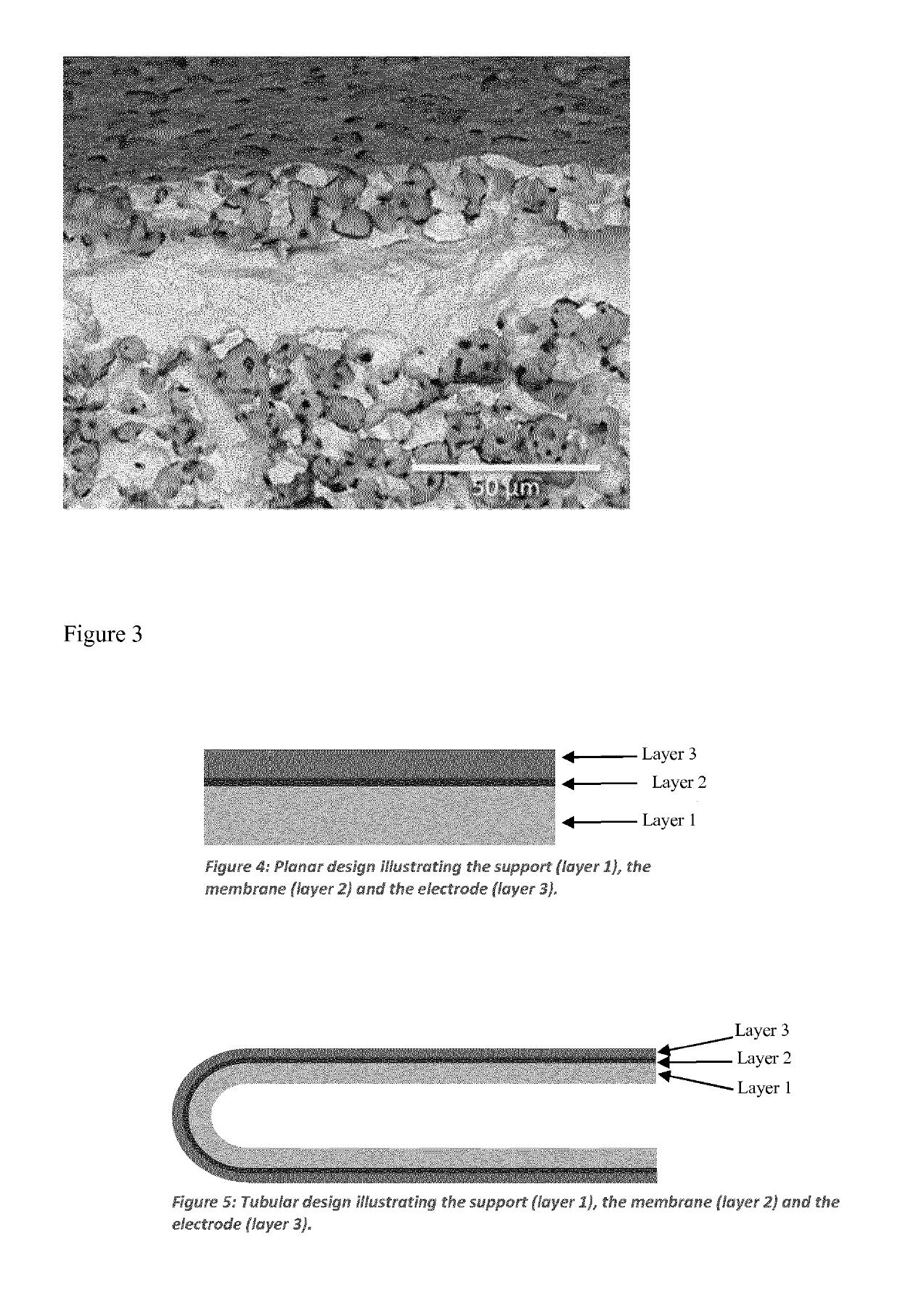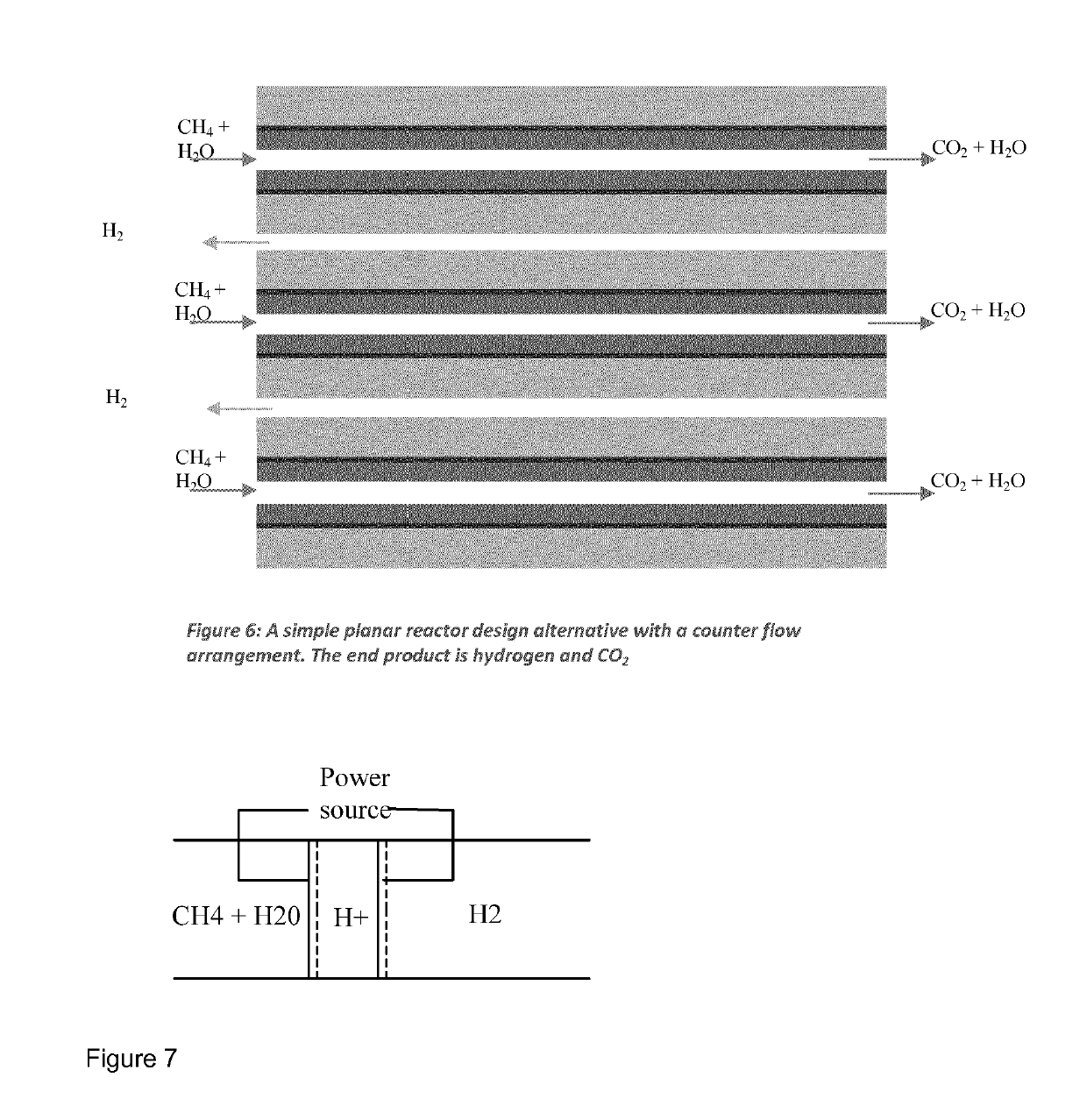Process for producing compressed hydrogen in a membrane reactor and reactor therefor
a membrane reactor and hydrogen compression technology, applied in separation processes, chemical/physical/physical-chemical processes, energy-based chemical/physical/physical-chemical processes, etc., can solve the problems of high hydrogen recovery, significant partial pressure difference of hsub>2, and complex overall process, and achieve the effect of low conversion
- Summary
- Abstract
- Description
- Claims
- Application Information
AI Technical Summary
Benefits of technology
Problems solved by technology
Method used
Image
Examples
example 1
Membrane Preparation
[0278]A tubular asymmetric membrane of 60 wt. % Ni—BaZr0.7Ce0.2Y0.1O3-y (BZCY72) support with a 30 μm dense membrane was synthesized using a reactive sintering approach (Coors et al. Journal of Membrane Science 376 (2011) 50-55). Precursors of BaSO4, ZrO2, Y2O3 and CeO2 were mixed in stoichiometric amounts (metal basis) together in a Nalgene bottle on ajar roller for 24 h. The material was dried in air and sieved through a 40 mesh screen. This forms a precursor mixture.
[0279]Two portions of the mix were mixed additionally with 64 wt. % NiO. One of those portions was then blended with water soluble acrylic and cellulosic ether plasticizer to prepare the extrusion batch.
[0280]Green tubes were extruded using a Loomis extruder. The extruded tubes were then dried and spray coated with the precursor mixture after drying. After a second drying step the tubes were dip coated in a solution of the previous second portion (containing NiO). The tubes were co-fired by hang-fi...
example 2
Membrane Preparation
[0284]2 tubular membranes, A and B, of 6 cm each where prepared as described in Example 1. Both segments have outer electrode areas of 14.1 cm2. Segment A is connected with segment B in series. The two segments are connected in series together using a glass ceramic based interconnect. Segment A is further sealed to an alumina riser of 25 cm length using a glass ceramic seal. Segment B is capped with a glass ceramic seal.
Catalyst
[0285]The anode support structure consisting of the 60 wt. % Ni—BZCY72 provides sufficient catalytic activity
Reactor and Setup
[0286]The reactor consists of a 1″ metallic outer tube (800 HT). The segmented ceramic tube on riser was mounted with Swagelok fittings seal and placed inside the outer tube. Inner gas tube and current collector consisted of at Ni-tube (O.D. 4.6 mm). To ensure contact with the support, Ni wool was put into segment A. The temperature was monitored with 3 thermocouples, two outside the reactor at heights corresponding...
PUM
| Property | Measurement | Unit |
|---|---|---|
| temperature | aaaaa | aaaaa |
| pressure | aaaaa | aaaaa |
| electric field | aaaaa | aaaaa |
Abstract
Description
Claims
Application Information
 Login to View More
Login to View More - R&D
- Intellectual Property
- Life Sciences
- Materials
- Tech Scout
- Unparalleled Data Quality
- Higher Quality Content
- 60% Fewer Hallucinations
Browse by: Latest US Patents, China's latest patents, Technical Efficacy Thesaurus, Application Domain, Technology Topic, Popular Technical Reports.
© 2025 PatSnap. All rights reserved.Legal|Privacy policy|Modern Slavery Act Transparency Statement|Sitemap|About US| Contact US: help@patsnap.com



